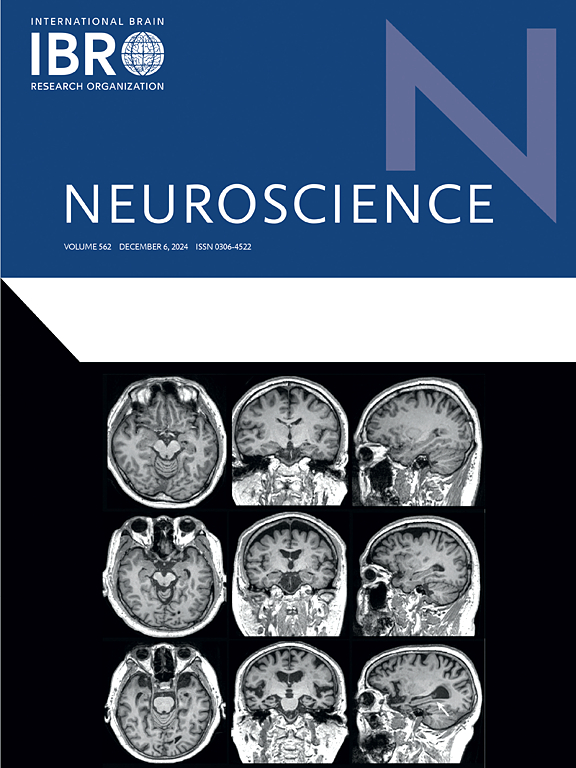大鼠pre-Bötzinger复杂神经元表型的表征
IF 2.9
3区 医学
Q2 NEUROSCIENCES
引用次数: 0
摘要
pre-Bötzinger复合体(preBötC)是负责产生呼吸的关键髓质区域。在啮齿类动物中,preBötC神经元几乎均匀地分为表达泡状谷氨酸转运蛋白2 (VGluT2)的兴奋性神经元和表达谷氨酸脱羧酶(GAD)或甘氨酸转运蛋白2 (GlyT2)的抑制性神经元。兴奋性和抑制性神经元之间的相互作用在节律性呼吸及其与其他生理功能的协调中起着重要作用。然而,关于成人preBötC神经元亚群的分类和生理作用的全面知识是有限的。这是由于preBötC与邻近区域的复杂互连,该区域的解剖边界不明确,各种神经化学特征没有明确的功能区分,以及主要依赖于产前小鼠数据。在这项研究中,我们旨在通过严格定义成年雄性大鼠preBötC的边界来增强对preBötC神经元及其比例的神经化学特征的理解(n = 3)。为此,我们采用RNAscope原位杂交技术鉴定并解剖学和系统地表征了preBötC神经元表达VGluT2、生长抑素(SST)、GAD1、水泡GABA转运蛋白(VGAT)和/或reelin的亚群。我们观察到,大多数表达sst的神经元是谷氨酸能神经元,占preBötC兴奋性种群的50%以上。此外,相当比例的sst表达神经元表达GAD1。我们的研究结果还表明,大约一半的sst表达神经元共表达reelin,并且大多数表达reelin的神经元是谷氨酸。一个关键的发现是,结合免疫组织化学的reelin与小白蛋白,是一个可靠的标志物,以确定preBötC的解剖位置。本文章由计算机程序翻译,如有差异,请以英文原文为准。
Characterizing the phenotype of pre-Bötzinger Complex neurons in rats
The pre-Bötzinger Complex (preBötC) is a key medullary region responsible for generating breathing. In rodents, preBötC neurons are divided almost evenly between excitatory neurons, which express vesicular glutamate transporter 2 (VGluT2), and inhibitory neurons expressing either glutamic acid decarboxylase (GAD) or glycine transporter 2 (GlyT2). The interaction between excitatory and inhibitory neurons plays a significant role in rhythmic breathing and its coordination with other physiological functions. However, comprehensive knowledge about the classification and the physiological roles of preBötC neuronal subpopulations in adults is limited. This arises due to the complex interconnections of preBötC with adjacent regions, undefined anatomical boundaries of the region, diverse neurochemical signatures without clear functional distinctions, and the predominant reliance on prenatal mouse data. In this study, we aimed to enhance the understanding of the neurochemical signatures of preBötC neurons and their proportions by rigorously defining the boundaries of the preBötC in adult male rats (n = 3). For this, we employed RNAscope in situ hybridization to identify, and anatomically and systematically characterize, the subgroups of preBötC neurons expressing VGluT2, somatostatin (SST), GAD1, vesicular GABA transporter (VGAT) and/or reelin. We observed that most SST-expressing neurons are glutamatergic and comprise over 50% of the excitatory population of preBötC. In addition, a considerable proportion of SST-expressing neurons express GAD1. Our results also show that approximately half of SST-expressing neurons co-express reelin, and that most reelin-expressing neurons are glutamatergic. A key finding is that the combination of immunohistochemistry for reelin with parvalbumin, is a reliable marker to define the anatomical location of preBötC.
求助全文
通过发布文献求助,成功后即可免费获取论文全文。
去求助
来源期刊

Neuroscience
医学-神经科学
CiteScore
6.20
自引率
0.00%
发文量
394
审稿时长
52 days
期刊介绍:
Neuroscience publishes papers describing the results of original research on any aspect of the scientific study of the nervous system. Any paper, however short, will be considered for publication provided that it reports significant, new and carefully confirmed findings with full experimental details.
 求助内容:
求助内容: 应助结果提醒方式:
应助结果提醒方式:


